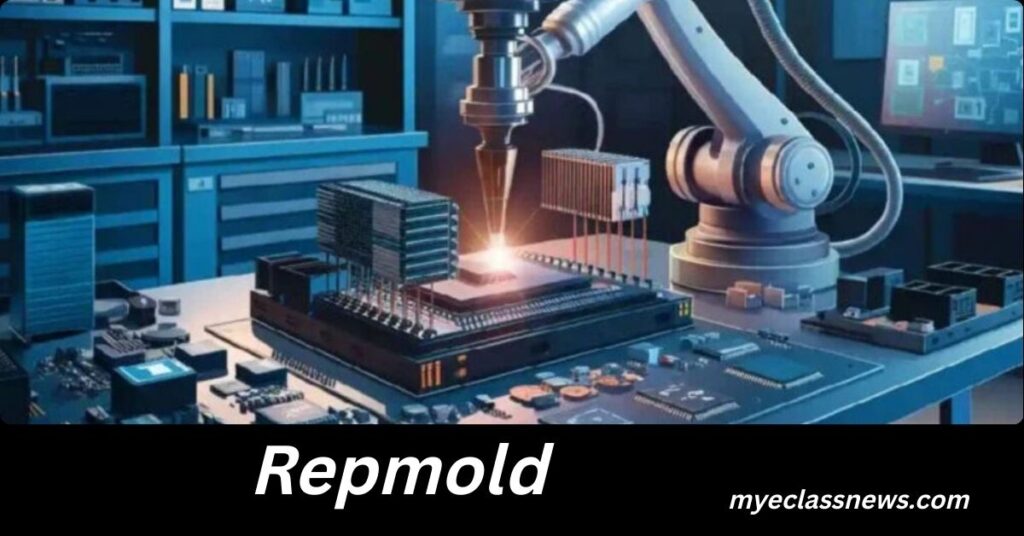Repmold: Exploring the Concept and Its Technological Impact

Repmold is an innovative concept that represents the future of manufacturing, design, and prototyping. At its core, it refers to technologies, systems, or processes focused on replicating or shaping models, designs, or products. These processes are crucial in various industries, from product development to production lines, and they hold significant potential for transforming the way businesses approach production, efficiency, and customization. This comprehensive guide will dive deep into the concept of Repmold, its applications, and its impact on industries today.
What is Repmold?
Repmold is a term that embodies the idea of reproducing or shaping models, designs, or products. At its essence, it is a system that focuses on the creation of exact copies or the shaping of physical models using cutting-edge technologies. These technologies often involve a combination of digital design, 3D modeling, and automated production processes, enabling manufacturers to replicate or modify existing products with high precision.
Repmold can be applied in various industries, including automotive, aerospace, healthcare, and even consumer goods. By using advanced techniques such as 3D printing, injection molding, and CNC machining, Repmold enables companies to create customized products at a rapid pace while ensuring accuracy and minimizing waste. This concept is especially relevant in today’s world, where customization, speed, and efficiency are essential for staying competitive.

How Repmold Revolutionizes Product Design and Development
One of the key aspects of Repmold is its role in product design and development. Traditionally, designing and prototyping a product involved long cycles of testing, iterations, and adjustments. However, with Repmold technologies, companies can significantly speed up the process by creating precise replicas or modified versions of existing designs. Here’s how it works:
Also Read: Best CRM for Charities Empowering Nusaker: A Comprehensive Guide
- Rapid Prototyping: Repmold allows businesses to quickly create prototypes of their products. With technologies like 3D printing, designers can produce an exact replica of a product in a fraction of the time compared to traditional methods. This reduces the time-to-market for new products and helps companies make decisions faster.
- Customization: Repmold also plays a critical role in enabling product customization. By utilizing 3D printing and other replication technologies, businesses can offer personalized products that meet the specific needs or preferences of their customers. For instance, the ability to quickly replicate custom designs means that companies can cater to a wide range of client demands, which is particularly beneficial in industries like fashion, healthcare, and consumer electronics.
- Cost Efficiency: Another major benefit of Repmold technologies is their cost efficiency. In the past, creating prototypes or new products was expensive due to the need for molds, materials, and time-consuming processes. Repmold reduces these costs by using digital models and automated systems that can replicate designs with minimal input and waste.
The Role of Repmold in Manufacturing
In manufacturing, Repmold takes on a critical role by enabling mass production of high-quality products with minimal human intervention. Here’s how it is changing the landscape of manufacturing:
- Automated Production: Through the use of CNC machines, injection molding, and 3D printers, Repmold systems can automate the production of complex parts or full products. This automation not only reduces labor costs but also increases the speed and accuracy of production.
- Precision and Quality: Repmold technologies ensure high levels of precision. The replication of designs with such accuracy ensures that each product is identical to the next, maintaining consistent quality throughout the production process. This is particularly important in industries like aerospace, where even the slightest variation in part dimensions can have serious implications.
- Sustainability: Traditional manufacturing often involves high material waste due to the excess removal of material during the production process. Repmold technologies, especially 3D printing, significantly reduce waste by using only the necessary material for each product. Additionally, some Repmold processes allow for recycling of materials, making them more environmentally friendly than traditional manufacturing methods.
Repmold Applications Across Industries
Repmold technologies have found applications in a wide range of industries. Their versatility and efficiency make them indispensable tools for businesses aiming to innovate and optimize their production processes.
Also Read: kz43x9nnjm65: A Revolutionary Approach in Design and Technology
1. Automotive Industry
The automotive industry is one of the largest adopters of Repmold technologies. From creating prototypes of new vehicle models to producing high-precision parts for mass production, Repmold allows for rapid iteration and customization. By using 3D printing and injection molding, automotive manufacturers can create parts that are lighter, stronger, and more efficient.
2. Aerospace and Aviation
In the aerospace industry, precision is everything. Even the smallest deviation in the dimensions of a part can lead to catastrophic failure. Repmold technologies are used to replicate parts and ensure that they meet stringent quality standards. By using digital design and automated production systems, aerospace companies can manufacture high-quality, reliable components with minimal risk.
3. Healthcare and Medical Devices
Repmold technologies have a significant impact on the healthcare sector, particularly in the production of medical devices, implants, and prosthetics. By using Repmold systems, manufacturers can create custom-fit implants or prosthetic limbs that match a patient’s specific anatomy. This level of customization helps improve patient outcomes and reduces the need for additional surgeries or adjustments.
4. Consumer Goods and Electronics
Repmold is also used extensively in the consumer goods and electronics industries. By replicating designs and customizing products, companies can meet the demands of a highly competitive market. For example, 3D printing allows for the rapid creation of custom phone cases, while injection molding is used to produce plastic components for various electronic devices.
The Future of Repmold: Trends and Innovations
As technology continues to evolve, so too does the potential for Repmold systems to transform industries. Here are some of the future trends and innovations to look out for:
- Integration with AI and Machine Learning: As AI and machine learning technologies advance, Repmold systems will become smarter and more efficient. AI can be used to optimize designs and predict potential issues before they arise, further enhancing the accuracy and speed of the replication process.
- Greater Use of Sustainable Materials: In the future, Repmold technologies will likely incorporate more sustainable materials, such as biodegradable plastics or recycled materials. This shift toward environmentally-friendly options will help reduce the ecological impact of manufacturing processes.
- On-Demand Production: The rise of on-demand manufacturing will enable businesses to produce products only when needed. This will reduce excess inventory, lower costs, and ensure that products are always up-to-date with the latest designs.
Also Read: Fascisterne: A Deep Dive into the History, Ideologies, and Legacy of the Fascist Movement
FAQs About Repmold
What is the primary benefit of using Repmold technology?
The primary benefit of Repmold technology is its ability to rapidly replicate designs with high accuracy, allowing for faster production, cost savings, and greater customization.
How does Repmold improve manufacturing efficiency?
Repmold improves manufacturing efficiency by automating the production process, reducing human intervention, and ensuring high precision in every part produced. This leads to faster production times, reduced costs, and less waste.
In what industries is Repmold commonly used?
Repmold is used in a variety of industries, including automotive, aerospace, healthcare, and consumer electronics. Its ability to replicate designs quickly and accurately makes it valuable across these sectors.
Is Repmold environmentally friendly?
Yes, Repmold technologies are generally more environmentally friendly than traditional manufacturing processes. By using automated systems and minimizing material waste, Repmold reduces the environmental impact of production.
What is the future of Repmold?
The future of Repmold includes the integration of AI, machine learning, and sustainable materials. These advancements will further enhance the efficiency, accuracy, and environmental sustainability of Repmold systems.
Conclusion
Repmold is more than just a buzzword; it is a transformative concept that is reshaping the way industries approach manufacturing, design, and product development. By enabling rapid prototyping, customization, and cost efficiency, Repmold technologies are helping companies stay competitive in an ever-changing market. As the technology continues to evolve, we can expect even more groundbreaking advancements that will drive the future of manufacturing and production.




